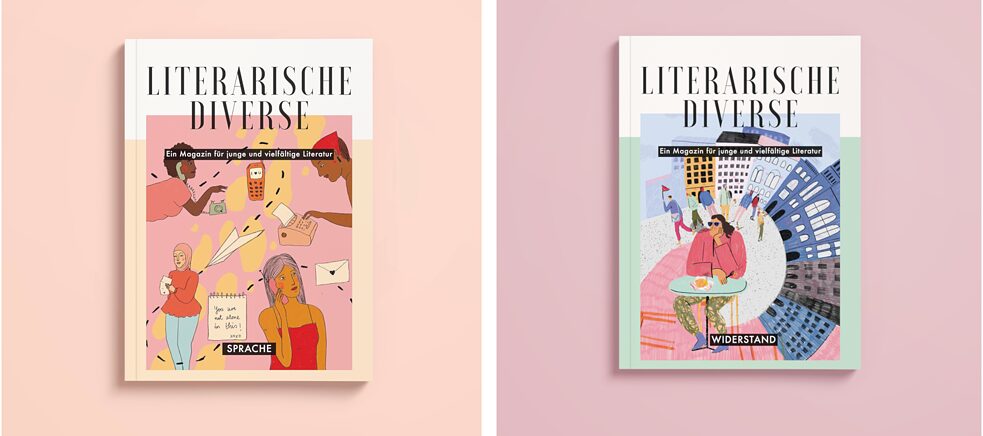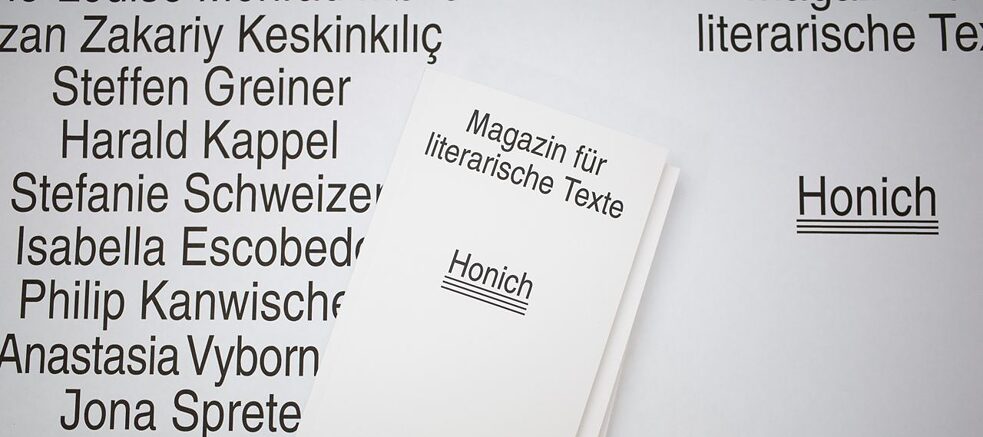Literature magazines in Germany
The new diversity

Like research laboratories for the literary world, magazines present new voices, provide space for experimentation, and test formats. And right now diversity is higher than ever before.
By Fabian Thomas
A history of literary magazines in Germany over the past fifty years would not be complete without big names like Akzente,Sinn und Form, and Die Horen. All founded some 70 years ago, many of the great writers of recent decades have published pieces in them ranging from poetry and prose to political essays. BELLA triste and Edit, both based near the writing schools in Hildesheim and Leipzig, have also earned stellar reputations and through regular changes in concept and layout, stayed exciting and trendsetting.
But a distinctly younger group has also entered the field with a whole range of publications. Diving into this diverse world of young literary magazines whisks readers off to places their established predecessors did not. The content can be surprising, such as in Kapsel magazine, which specialises entirely in Chinese science fiction. “What we like so much about the stories from China is the ingenuity, the optimism and the powerful images and visions of the young authors in particular,” is how Lukas Dubro, one of Kapsel’s founders, describes the idea behind the magazine. The current issue, Träume (Dreams), is bursting with colour and juxtaposes pieces by Chinese authors with work by German colleagues.
Diversity increasingly visible
Yasemin Altınay focuses on diversity in her Literarische Diverse (Literary Diversity) magazine. The third issue entitled “Resistance” appeared at the end of 2020. It brings together texts by Black, Indigenous Peoples and People of Colour (BIPoC) and LGBTQI+ voices, and the sheer quantity is astounding with a striking number of poems, an interview with author and journalist Sibel Schick on solidarity, and photos of Black Lives Matter demonstrations from the past year interspersed throughout. The editor, a very busy person in the best possible sense, expanded beyond the magazine to found a publishing company in 2019, which has already released an initial volume of poetry.
 “Literarische Diverse” features the voices of migrants and LGBTQ+ writers by publisher Yasemin Altinay who founded a publishing company under the same name in 2019.
| Photo (detail): © Literarische Diverse Verlag
Glitter magazine has a similar focus as Literarische Diverse, with a special emphasis on queer authors. “So, Black authors, people of colour, women*, and queers supposedly don’t write well enough to be reviewed in the feuilleton, to be awarded grants and prizes?”, the editors provocatively ask in the editorial, before going on to prove otherwise. As with Literarische Diverse, the issue is filled with contributions that include poems, excerpts from novels, and fragments of plays.
“Literarische Diverse” features the voices of migrants and LGBTQ+ writers by publisher Yasemin Altinay who founded a publishing company under the same name in 2019.
| Photo (detail): © Literarische Diverse Verlag
Glitter magazine has a similar focus as Literarische Diverse, with a special emphasis on queer authors. “So, Black authors, people of colour, women*, and queers supposedly don’t write well enough to be reviewed in the feuilleton, to be awarded grants and prizes?”, the editors provocatively ask in the editorial, before going on to prove otherwise. As with Literarische Diverse, the issue is filled with contributions that include poems, excerpts from novels, and fragments of plays.
But the young, up-and-coming publications also include magazines that specialise in individual literary genres, such as Transistor magazine dedicated to contemporary poetry and already in its fourth issue. While the convenient small format previously covered topics such as poetry criticism and digital poetry, the latest issue is all about 2020 Georg Büchner Prize winner poet Elke Erb. Well-known authors including Ulf Stolterfoht, Olga Martynova and Jan Kuhlbrodt join with young voices like Alke Stachler, Rike Scheffler and Hannah Schraven in contributing individual articles that explore Erb’s poetry.
A workout for literature athletes
Does literature have to be heavy and hard to digest? GYM magazine reinterprets this trope in a surprising way with the subtitle “Heft für Literatur als Kraftsport” (magazine for literature as weight training). Readers get what was promised: The second issue is a collection of poems and prose that deal with physical labour, like the kind women do for their families without much fanfare; with job interviews that call for performance, competition and elbow tactics; and with fathers who realise that there are worlds between the realities of their lives and those of their children. “We see ourselves as workout buddies for literature athletes,” the editors say. “To us, working together on a text is not a mass exercise, but more an exciting, productive and enriching phase of definition. The GYM is a democratic place in the best sense of the word, yet never arbitrary.”
It would be easy to overlook the unusually simple design of Honich, a black-and-white “Magazine for Literary Texts” with no cover design. For the third issue, the editors made a virtue of modesty and asked authors to send in only their second-best pieces, providing a glimpse into the authors’ slush piles and highlighting texts that have already been discarded, filed away, or rejected. The disordered thoughts of a young woman shopping at the drugstore and watching television. These include associative reflections on being born on a Good Friday, an explicit poem about bodily fluids, self-harm and sexual intercourse, and a photo series with obliquely cropped everyday impressions – in black and white, of course.
 In striking black and white, “Honich” magazine recently came up with an unusual concept and asked authors to submit their second-best pieces for the third issue.
| Photo (detail): © Honich
In striking black and white, “Honich” magazine recently came up with an unusual concept and asked authors to submit their second-best pieces for the third issue.
| Photo (detail): © Honich